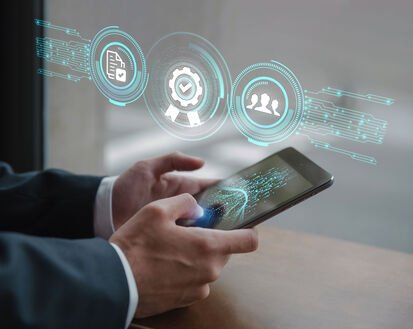
In today’s competitive landscape, businesses constantly look for smarter ways to manage costs, improve efficiency, and maintain a strong supply chain. A powerful tool driving this change is the procurement ERP system. By integrating purchasing processes into a central digital platform, organizations can streamline sourcing, supplier management, invoicing, and reporting in real time.
This blog explores what a procurement ERP system is, why it matters, its key features, and how platforms like eprocurement.ai shape the future of procurement.
What Is a Procurement ERP System?
A procurement ERP system is specialized software that merges procurement activities with enterprise resource planning (ERP). Instead of using scattered spreadsheets, manual approvals, and disconnected systems for purchasing, companies can use a central digital platform to:
- Manage suppliers and contracts.
- Automate purchase requests and approvals.
- Track spending and budgets.
- Streamline invoicing and payments.
- Gain insights through analytics and reporting.
In short, a procurement ERP system serves as the backbone of an organization’s sourcing and procurement strategy by ensuring efficiency, transparency, and compliance.
Why Companies Need a Procurement ERP System
1. Cost Savings
A procurement ERP system cuts unnecessary spending by giving organizations complete visibility of supplier contracts, negotiated prices, and real-time budget updates.
2. Increased Efficiency
Manual procurement involves endless emails, phone calls, and paperwork. Automation reduces the time for processes like creating purchase orders and matching invoices from days to minutes.
3. Stronger Supplier Relationships
Suppliers are essential to procurement. A procurement ERP system promotes clear communication, timely payments, and collaboration based on data.
4. Better Compliance and Risk Management
Regulatory compliance is essential. Procurement systems provide audit trails, approval hierarchies, and compliance monitoring.
5. Data-Driven Decisions
From spend analytics to supplier performance reports, organizations can use real-time data for better purchasing decisions.
Core Features of a Procurement ERP System
When evaluating solutions like eprocurement.ai, businesses often look for these essential features:
- Supplier Management: Central database of approved suppliers.
- Purchase Requisitions & Approvals: Automated workflows for quicker decision-making.
- E-Sourcing: Digital tendering, RFQs, and contract management.
- Catalog Management: Easy access to negotiated supplier catalogs.
- Invoicing & Payments: Integrated systems for smooth financial operations.
- Analytics & Reporting: Dashboards and KPIs for tracking performance.
Procurement ERP System in Action: A Typical Workflow
- An employee submits a purchase requisition.
- The request goes through automated approval hierarchies.
- The procurement ERP system checks supplier catalogs and contracts.
- A purchase order is generated and sent to the supplier.
- Goods or services are delivered, with delivery tracking.
- An invoice is automatically matched with the purchase order.
- Payment is processed and recorded.
This end-to-end automation reduces errors, speeds up processes, and ensures accountability.
Eprocurement.ai : Redefining Digital Procurement
Among the growing number of solutions available, eprocurement.ai stands out for its powerful features driven by artificial intelligence. By combining traditional ERP functions with AI insights, this platform helps organizations automate and optimize procurement.
Some key advantages include:
- Predictive spend analysis to forecast budget needs.
- AI-based supplier recommendations.
- Smart contract management to lower compliance risks.
- User-friendly dashboards for both small businesses and large enterprises.
For companies that want to modernize procurement, eprocurement.ai provides an innovative way forward.
Procurement ERP System and Digital Transformation
Digital transformation isn’t just about adopting technology; it’s about rethinking processes. A procurement ERP system is crucial in this shift. By moving procurement from a tactical to a strategic function, businesses can:
- Align procurement goals with business objectives.
- Improve collaboration across departments.
- Utilize automation and AI for better sourcing.
- Build long-term strength in supply chains.
Common Challenges and How ERP Procurement Solves Them
Maverick Spending
Solution: A procurement ERP system enforces the use of approved suppliers and negotiated rates.
Long Approval Cycles
Solution: Automated workflows and mobile approvals speed up processes.
Poor Supplier Visibility
Solution: Centralized supplier management ensures performance tracking.
Manual Errors in Invoices
Solution: Automated three-way matching (invoice, PO, receipt) prevents discrepancies.
Key Trends Shaping Procurement ERP Systems
AI & Machine Learning: Platforms like eprocurement.ai use predictive analytics.
- Cloud-Based Systems: Easy to scale and access remotely.
- Mobile Procurement: Approvals and tracking on the go.
- Sustainability Tracking: Monitoring supplier ESG (Environmental, Social, Governance) compliance.
- Blockchain: Ensuring secure and clear transactions.
Steps to Implement a Procurement ERP System
- Assess Needs: Identify gaps in current procurement practices.
- Choose the Right Platform: Evaluate vendors like eprocurement.ai based on features, scalability, and usability.
- Data Migration: Transfer supplier and purchasing data securely.
- User Training: Educate employees for smoother adoption.
- Continuous Improvement: Regularly update processes and use new features.
Final Thoughts
In a time when cost efficiency, transparency, and speed are vital, a procurement ERP system is no longer a luxury but a necessity. By streamlining every part of procurement, these systems help businesses save money, strengthen supplier relationships, and make better decisions based on data.
For organizations looking for a future-proof solution, platforms like eprocurement.ai lead the way with AI-driven features and user-friendly designs. Whether you’re a small business or a large enterprise, investing in a procurement ERP system is one of the smartest steps you can take toward sustainable growth.

